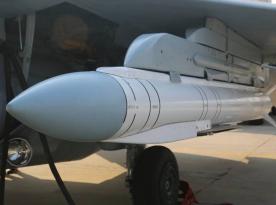Russian developers continue their efforts to create a counterpart to Ukrainian Baba Yaga drone and have introduced new Buran hexacopter. While primarily designed for cargo transport, the Buran drone is capable of performing various additional tasks, including reconnaissance missions (even at night with the use of thermal imaging), deploying munitions, laying mines, acting as a mothership for smaller drones, and potentially evacuating wounded personnel.
According to russian reports, multiple prototypes of the Buran drone have already been produced and tested. The drone was specifically designed for combat operations and is expected to undergo testing in battlefield conditions soon. Its technical specifications include an 80 kg weight and the ability to carry a payload of up to 80 kg. Fully loaded, it has a maximum flight time of approximately 22 minutes, while flying without cargo extends the flight duration to about 45 minutes. The Buran drone can reach speeds of 70 km/h and achieve a flight altitude of 3,000 meters.
Read more: Unusual Operation: Ukrainian Drone Operators Eliminate Two russian Occupiers Riding a Jet Ski Along the Dnipro River
The developers highlight the drone’s range as a key feature, claiming a flight radius of up to 20 km. When operating at maximum load and speed, it can cover just under 26 km round-trip (13 km one-way). Without cargo, the drone’s range increases to over 52 km round-trip (26 km one-way). However, achieving the claimed 20 km range is only feasible with less than half its maximum payload.

Given Ukraine’s successful use of similar drones in combat, monitoring the development and potential deployment of the Buran drone is crucial, especially since it can carry up to 80 kg, significantly enhancing its potential as an attack drone. However, its large size also makes it more susceptible to countermeasures, such as air defense FPV drones.
The Buran drone is reportedly capable of serving as a relay station for FPV drones, enabling it to act as a mothership to extend the operational range of other drones to as much as 40 km. As for its capability to evacuate wounded personnel, even russian sources express skepticism, suggesting that it would only be used in dire circumstances where no other options are available.

The drone is equipped with a three-band communication system that is protected against electronic warfare measures. In the event of a video feed loss, the Buran drone is designed to return autonomously, and developers are working on additional algorithms to ensure the drone’s recovery in critical situations.
Read more: The Brakestop Project Mirrors Ukraine’s Palianytsia Drone Concept for Surface-Based Launch














